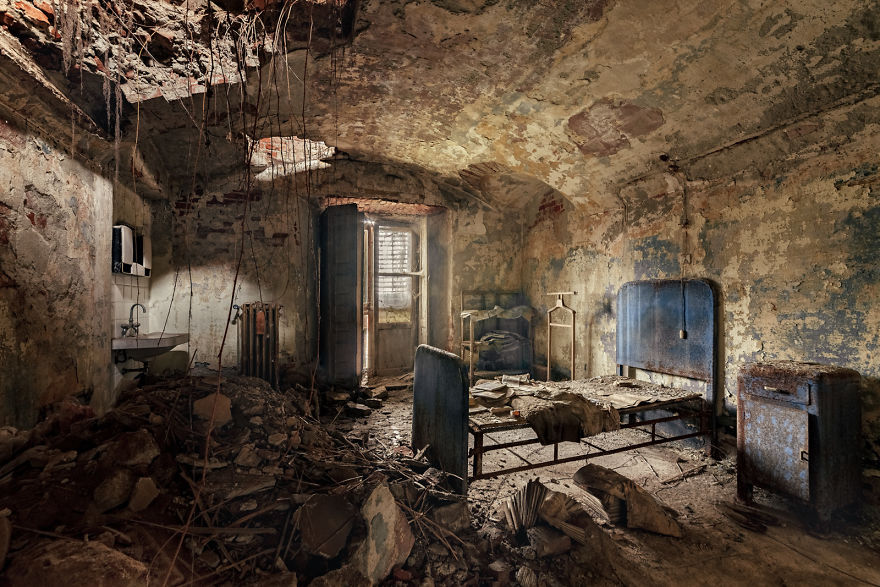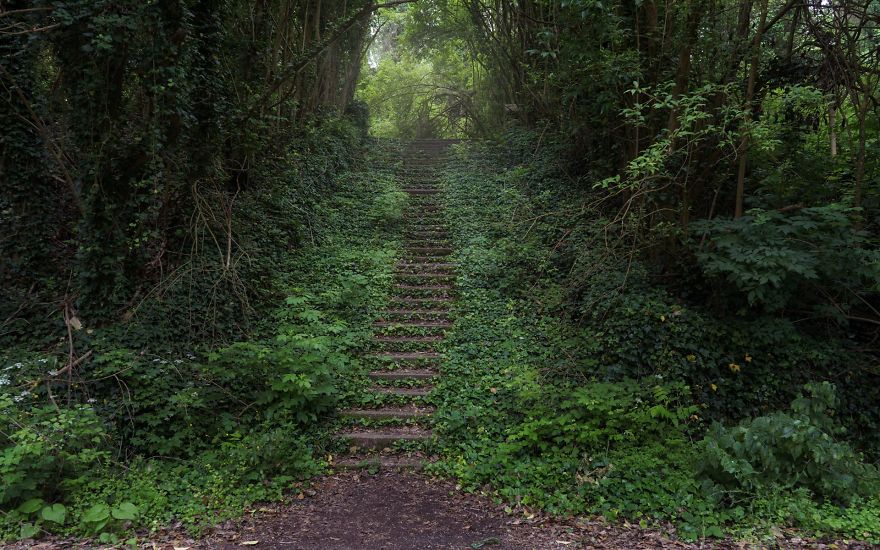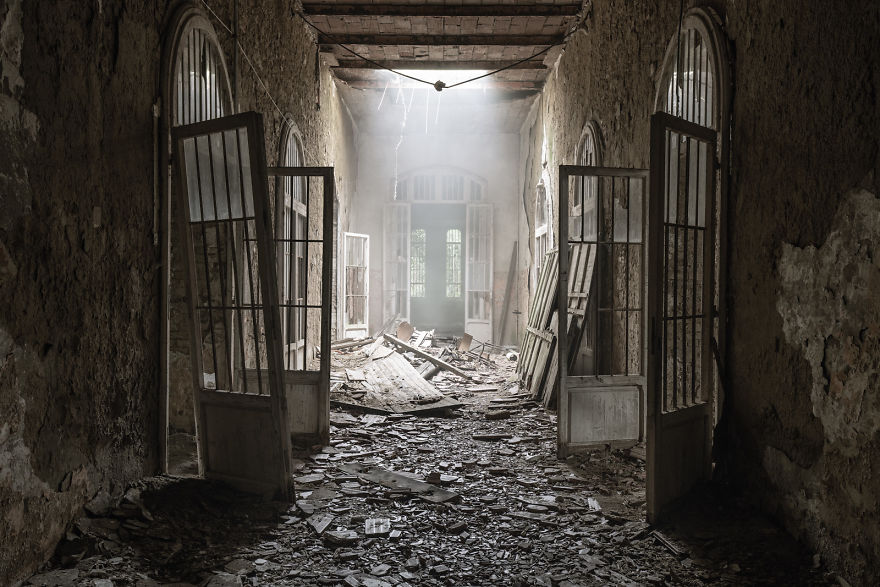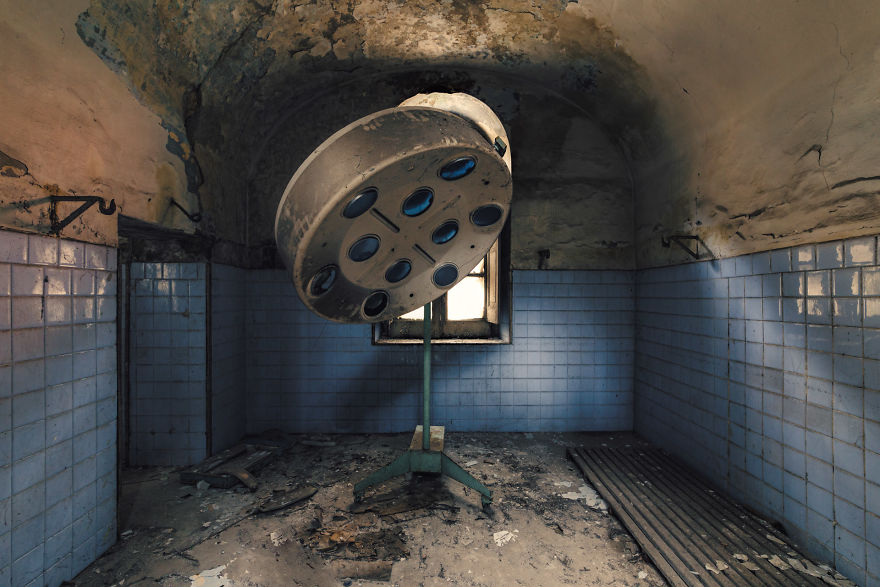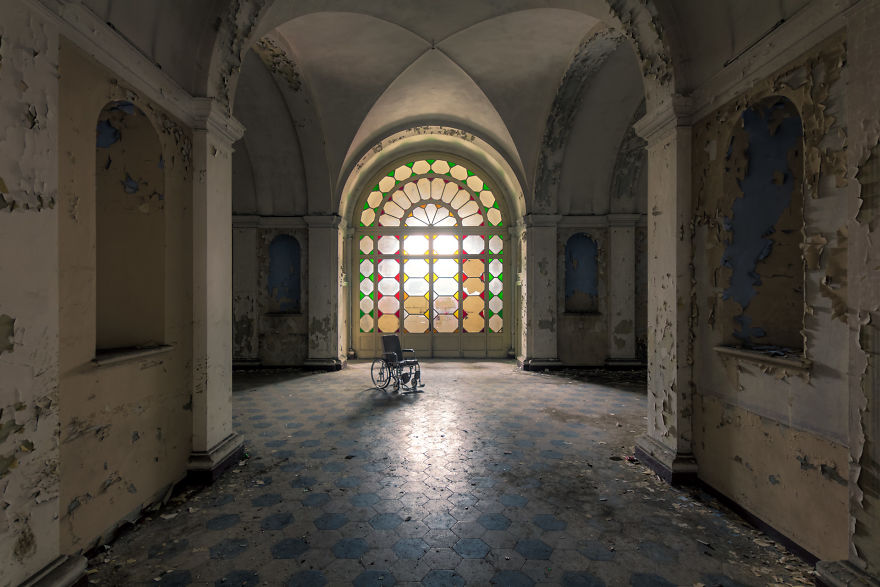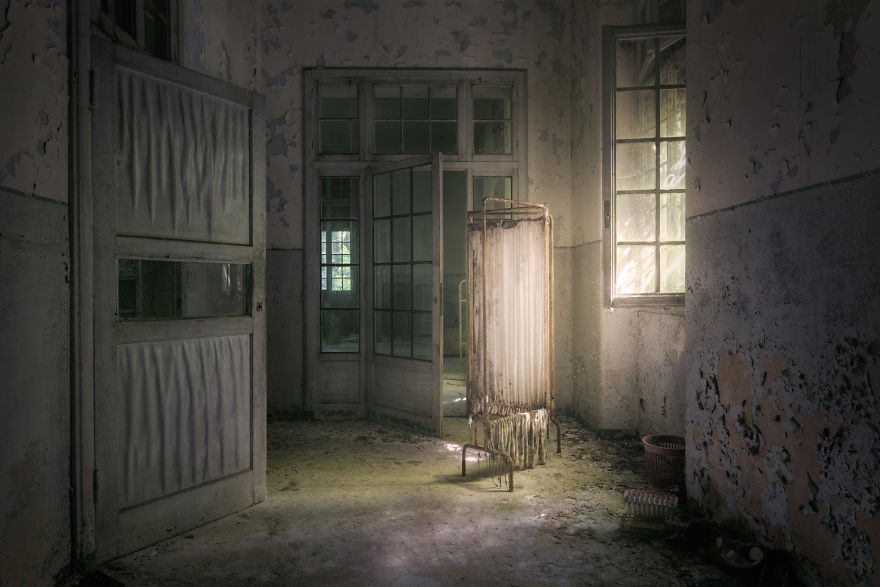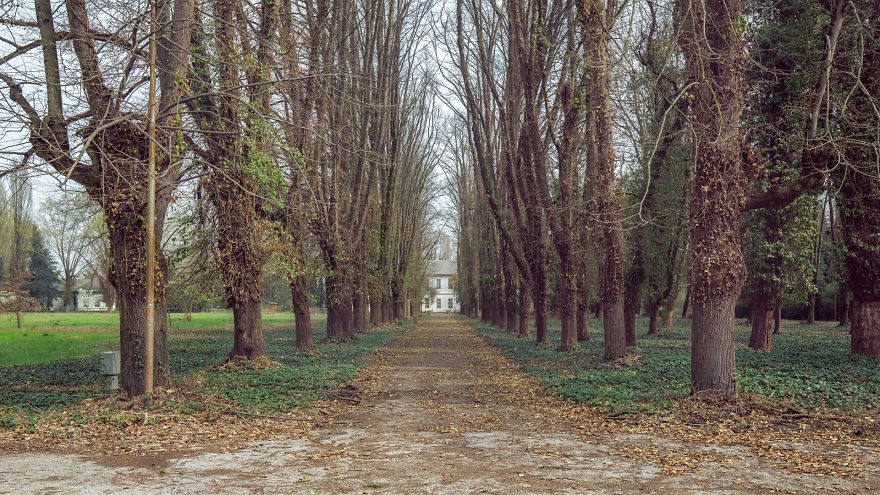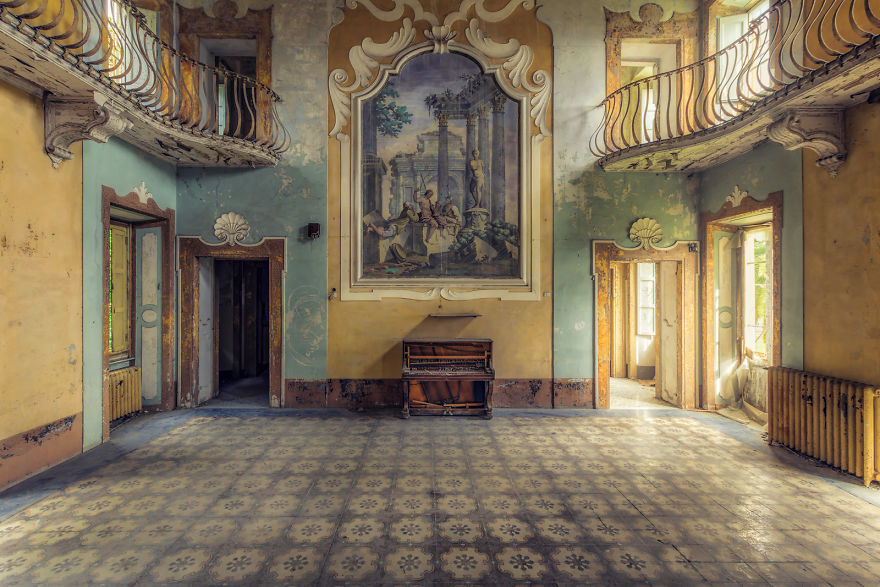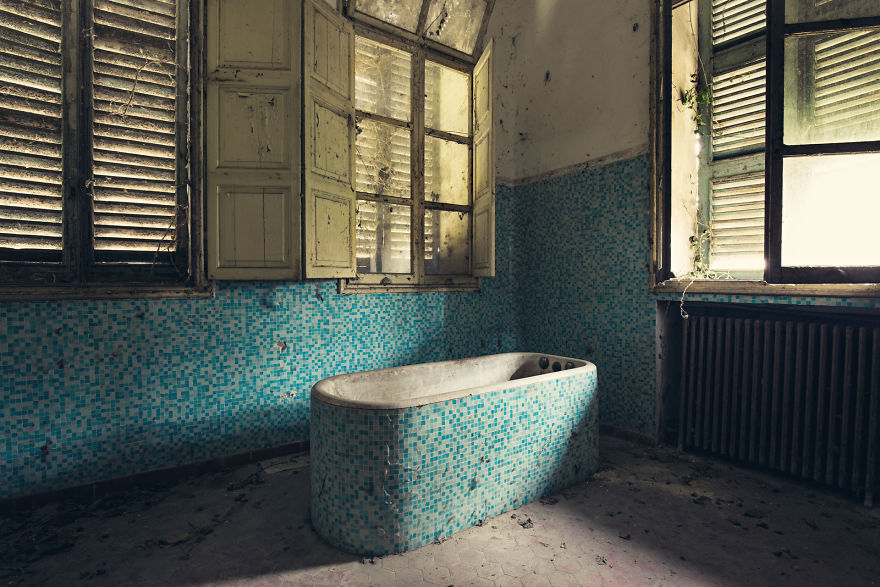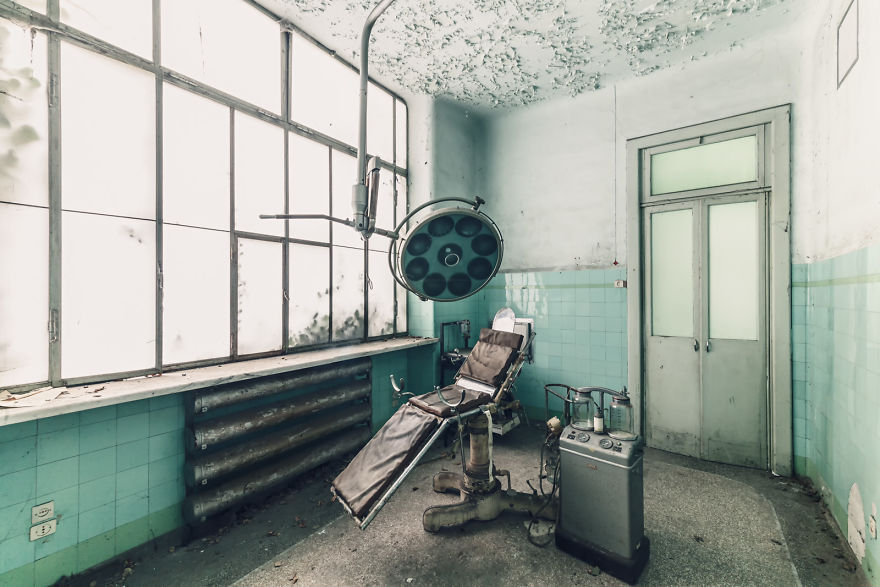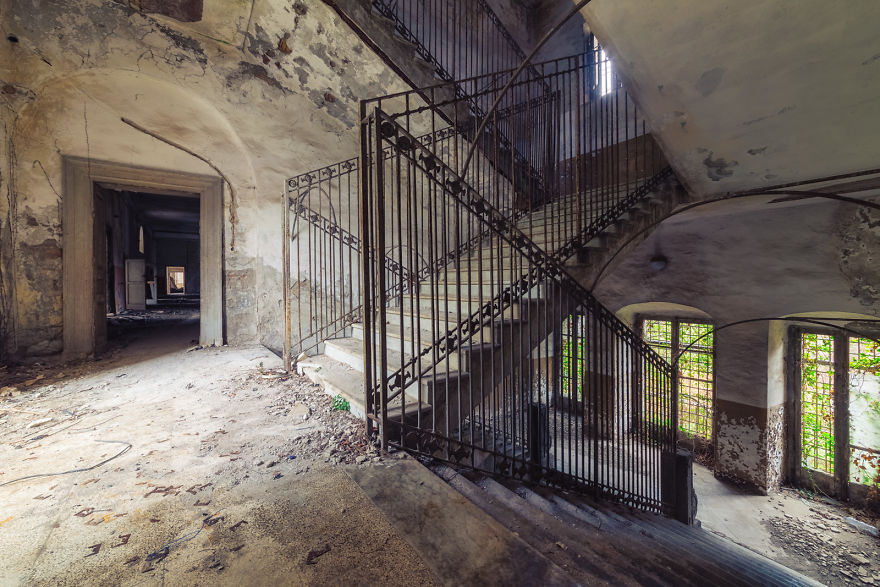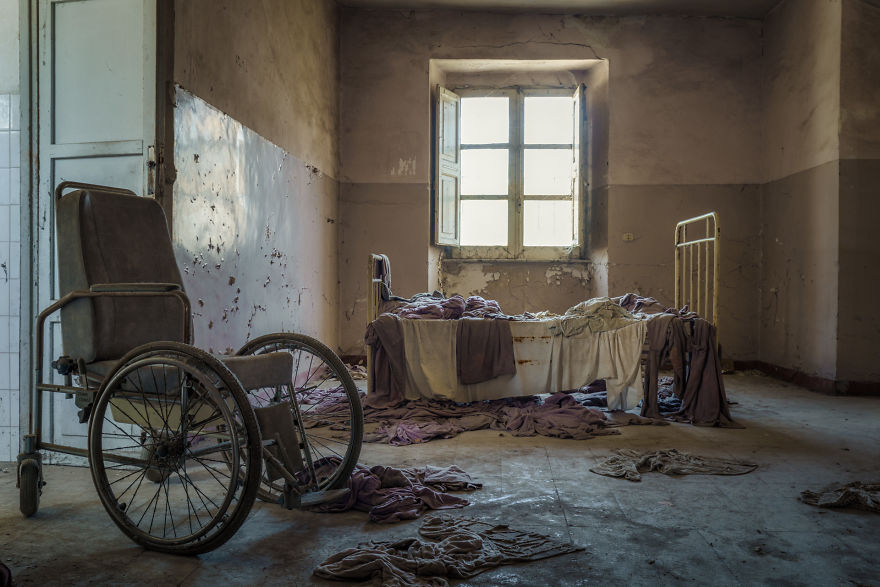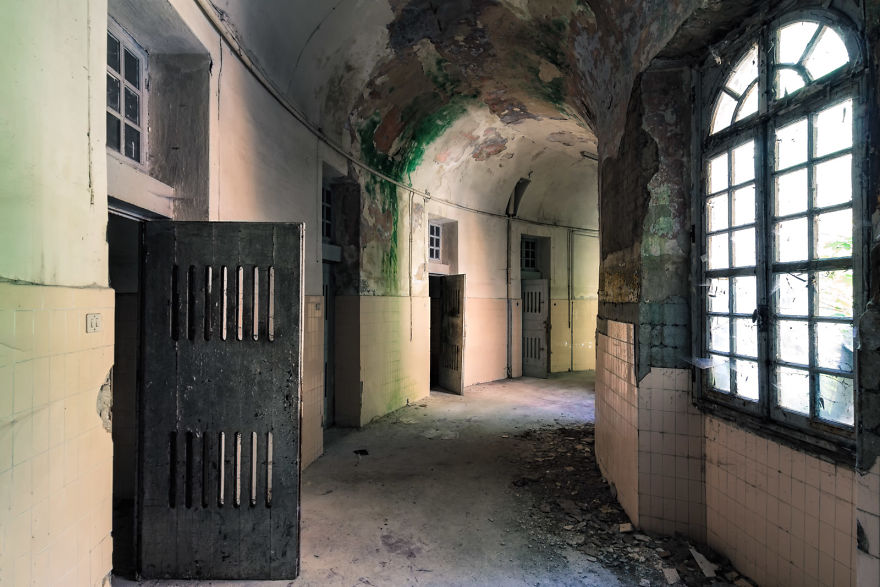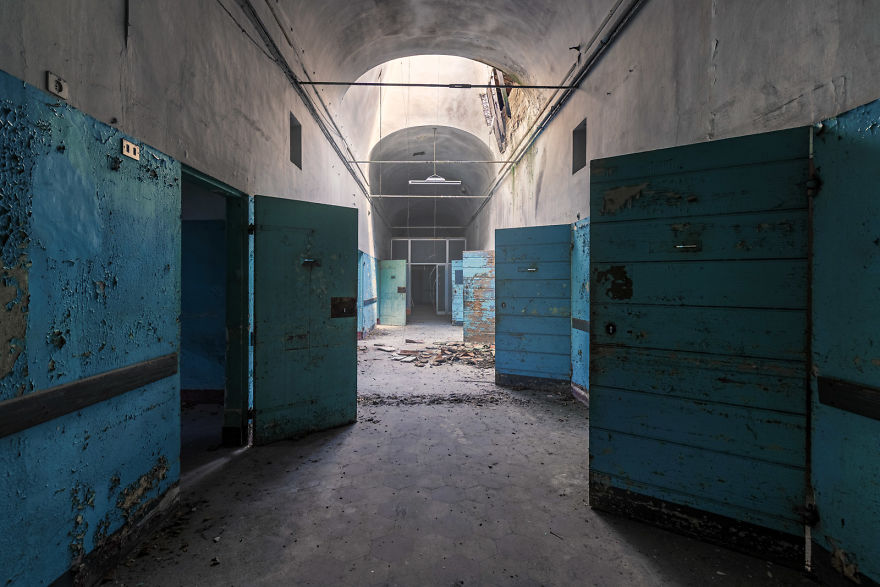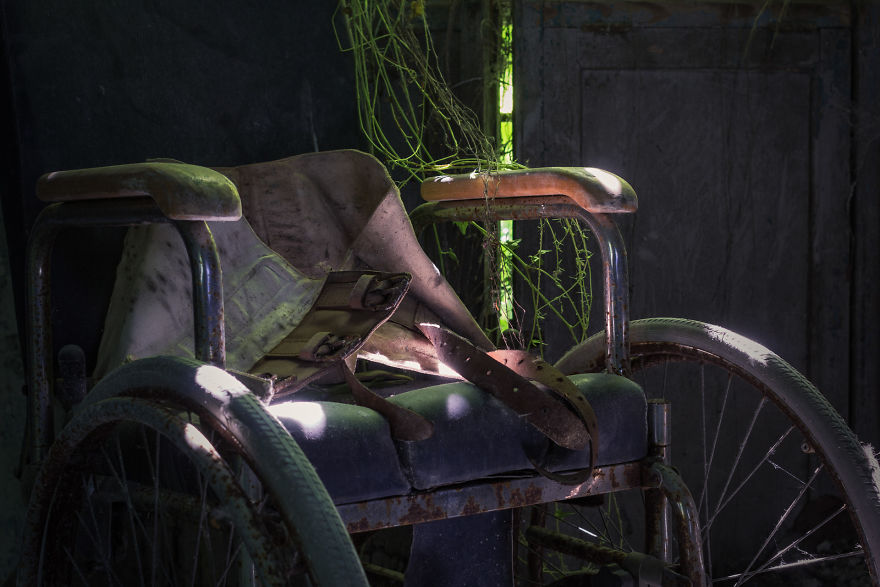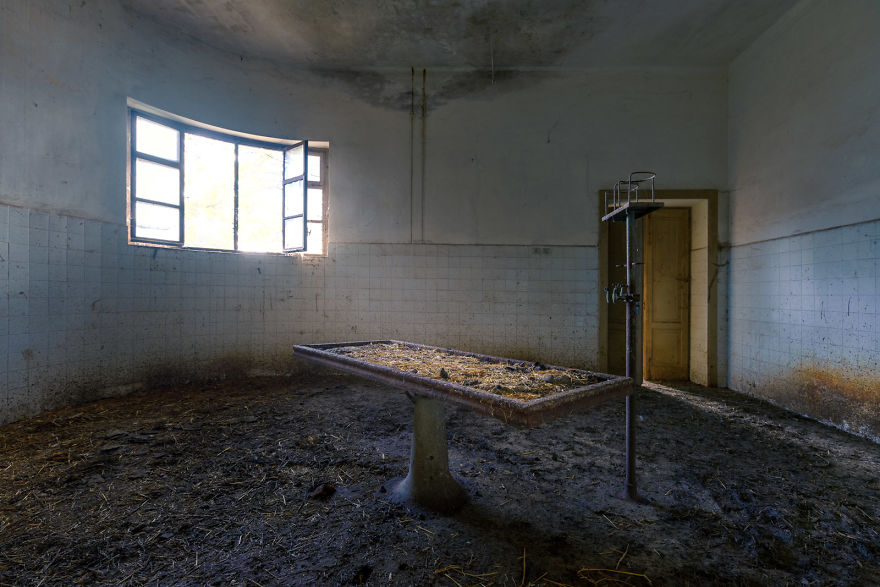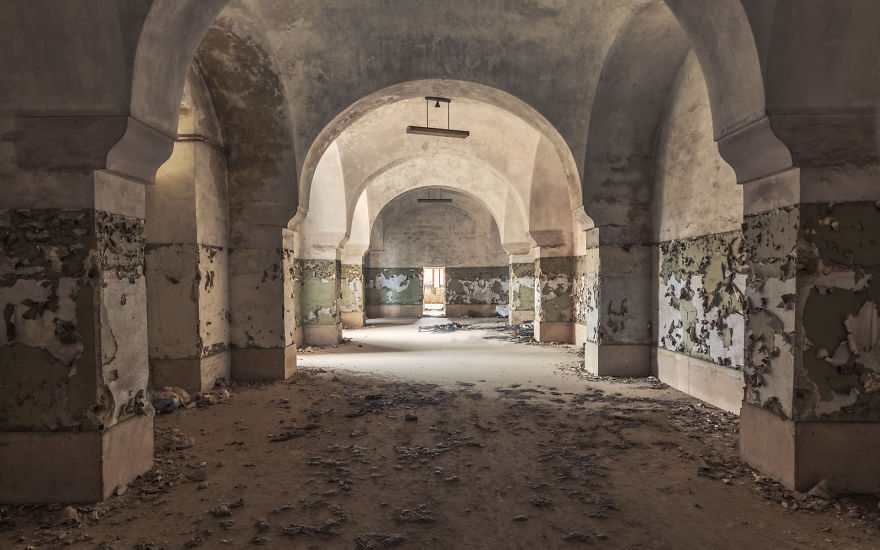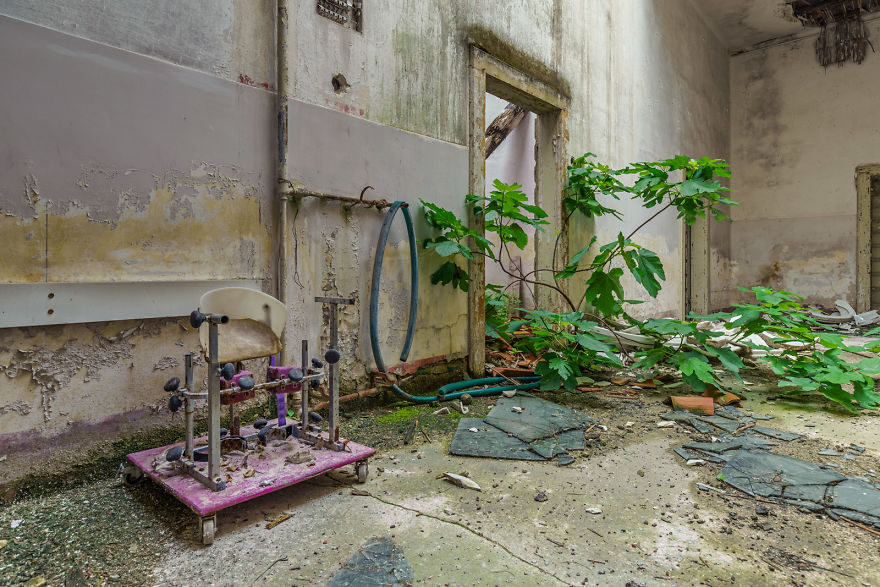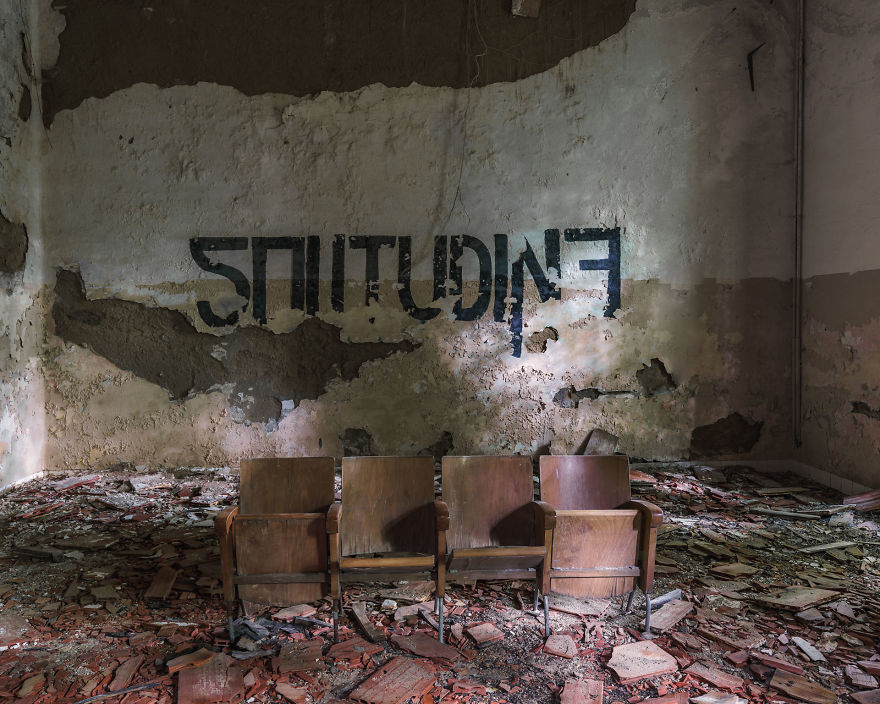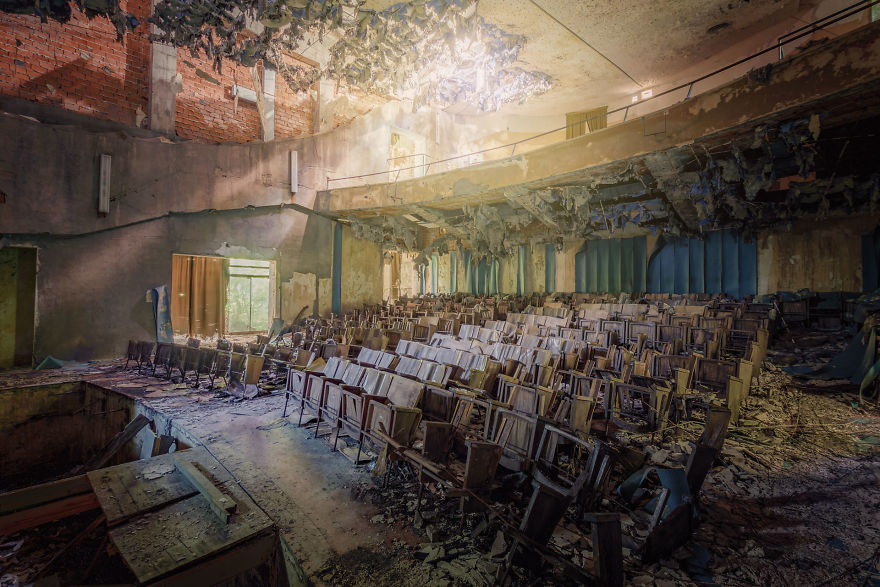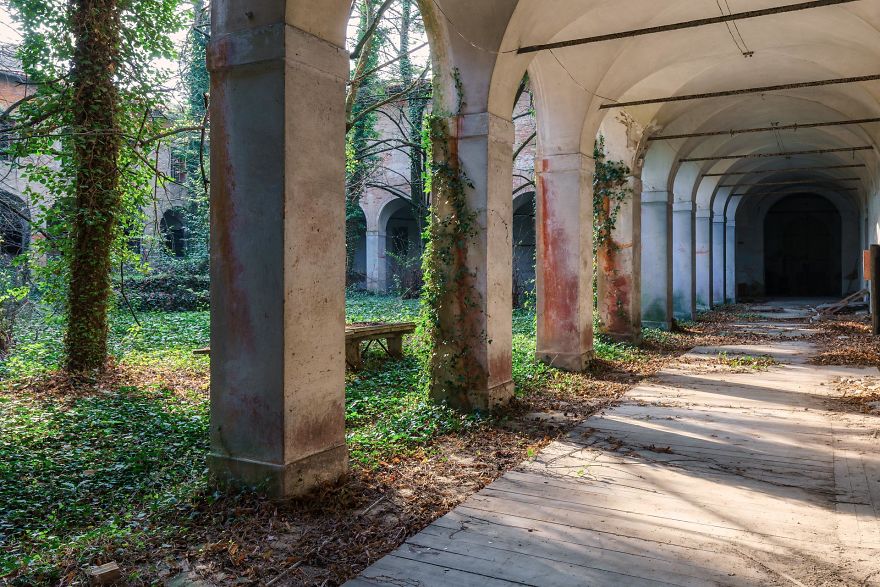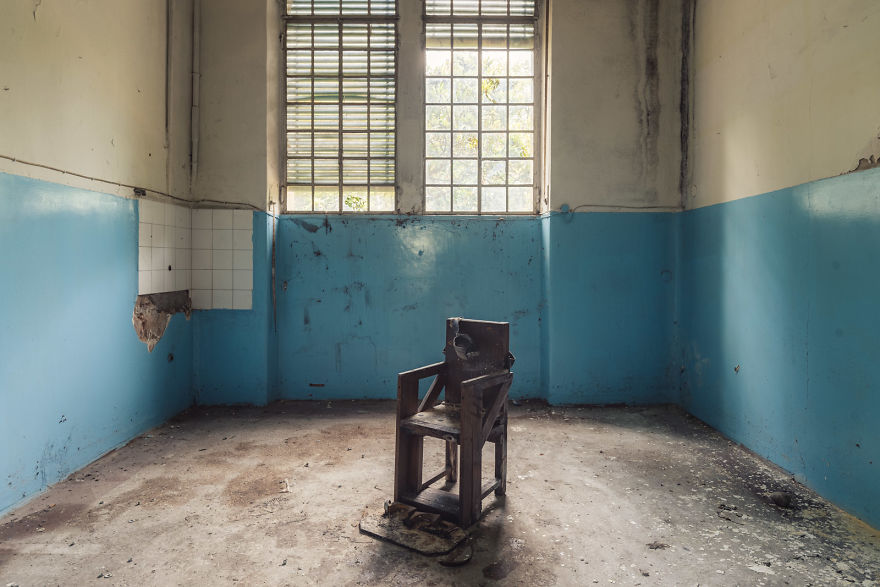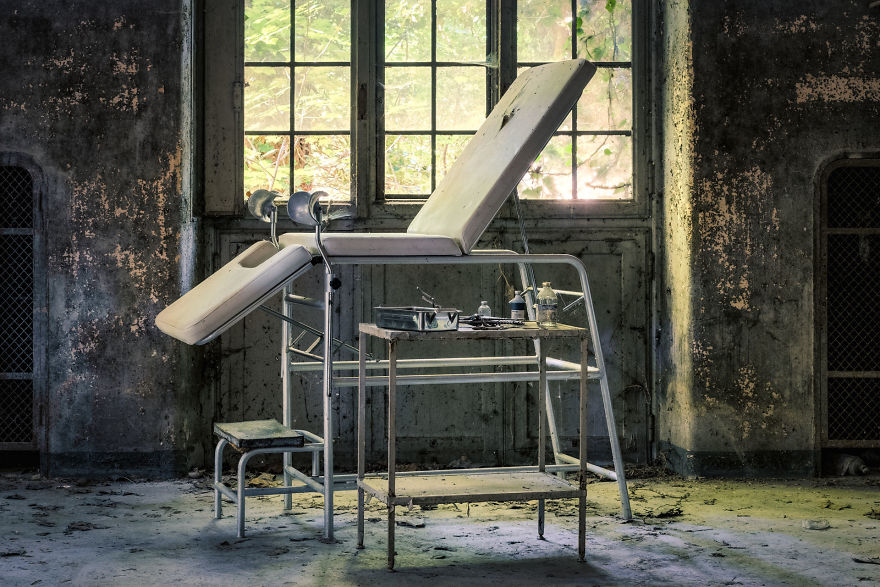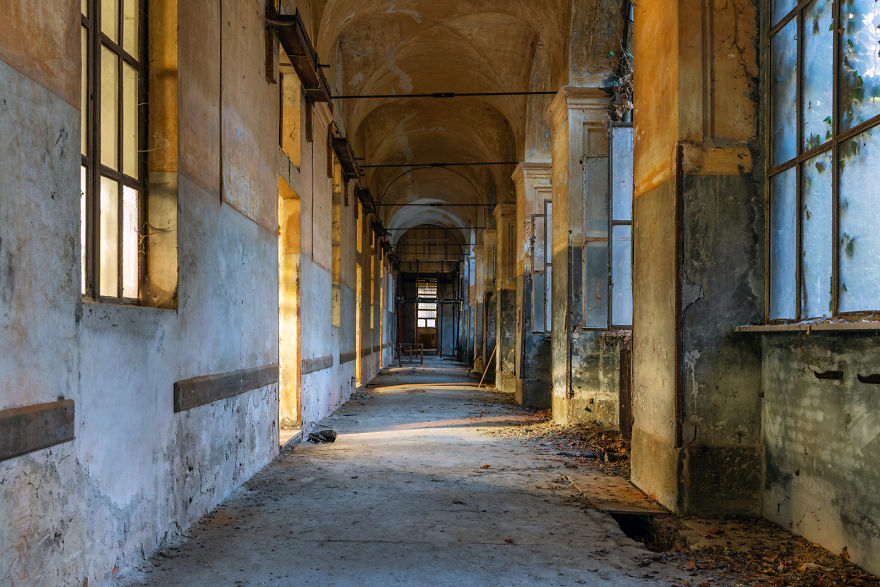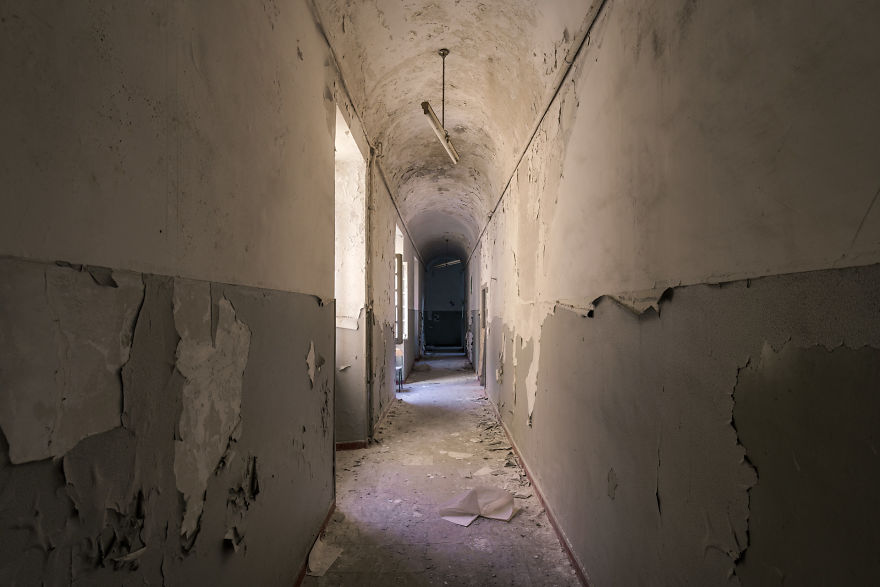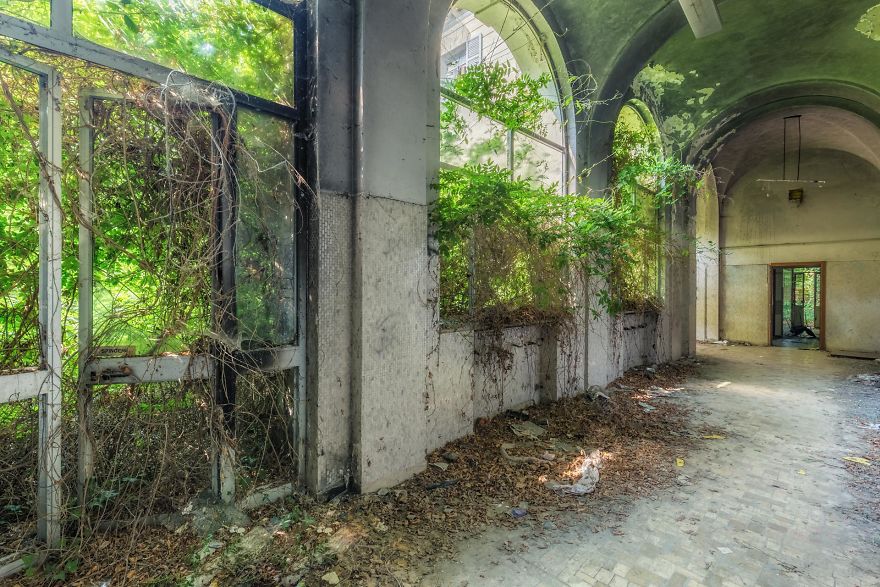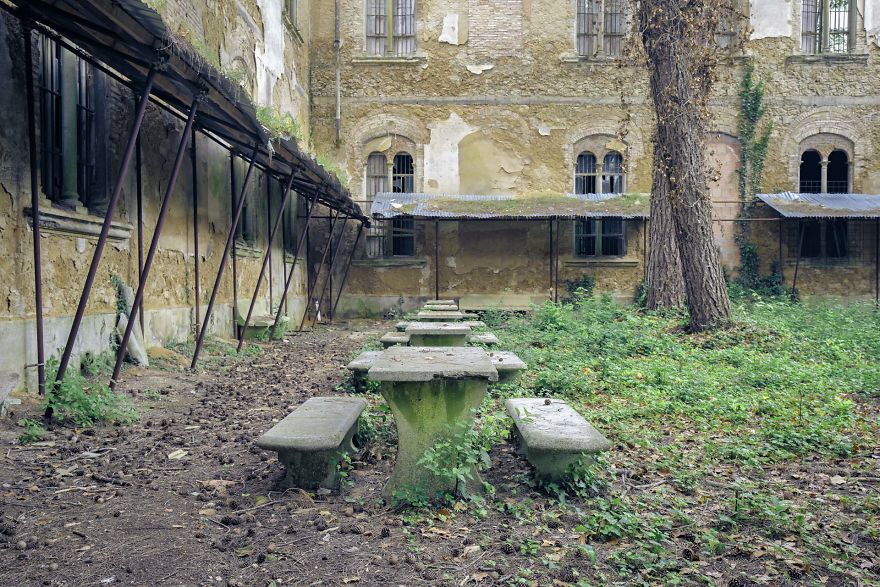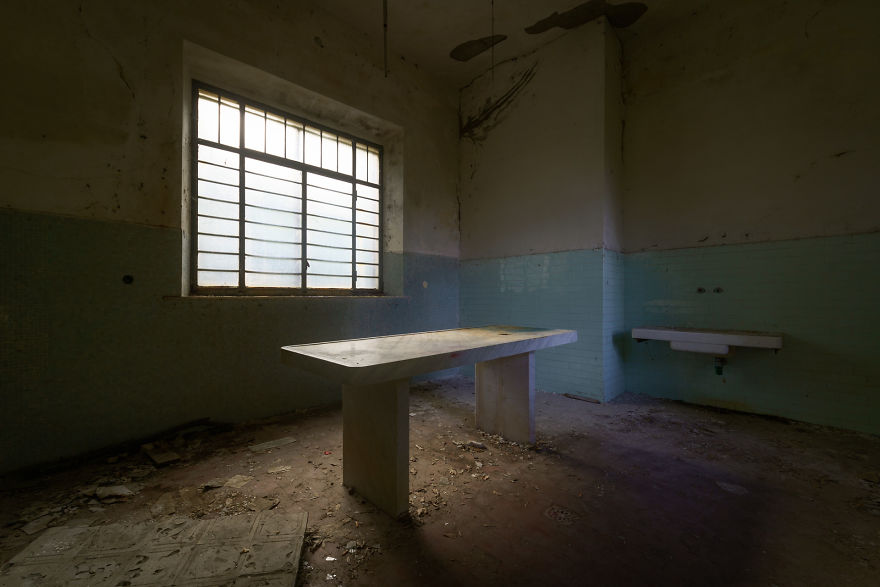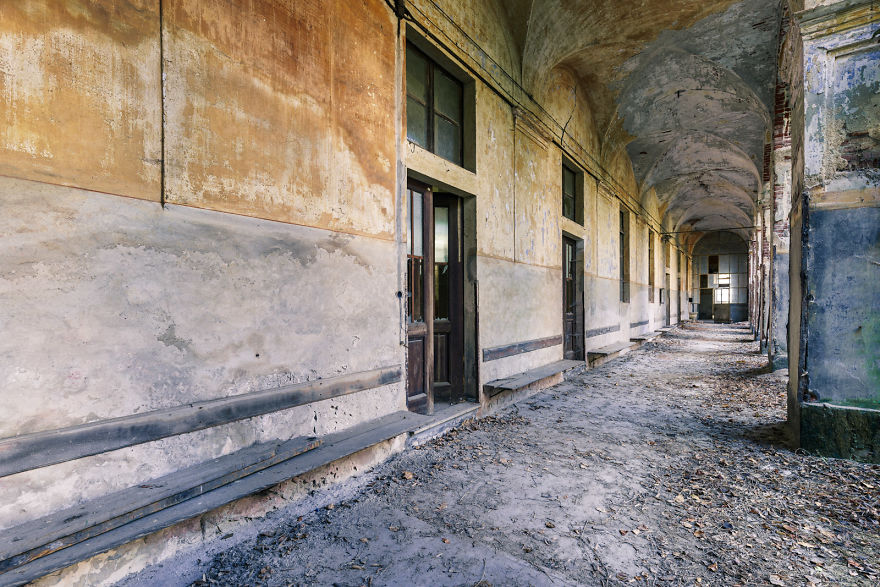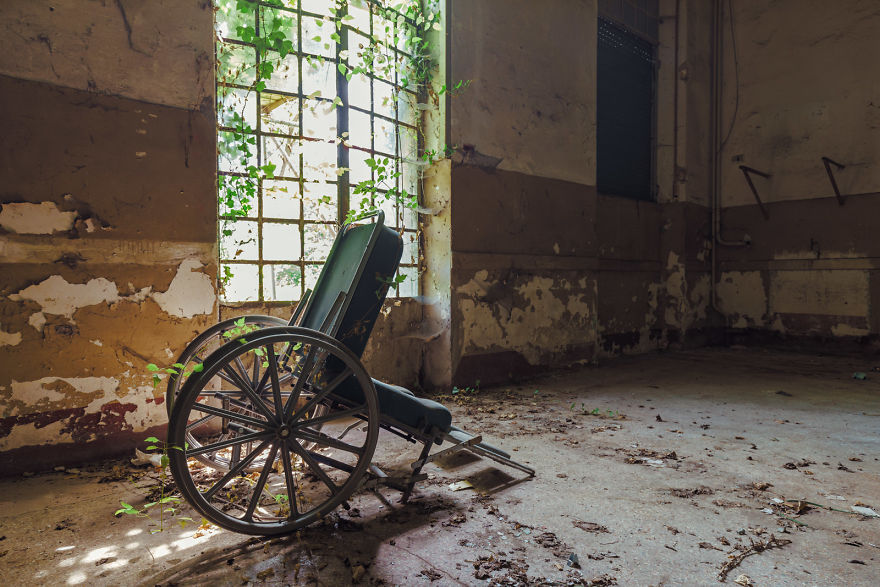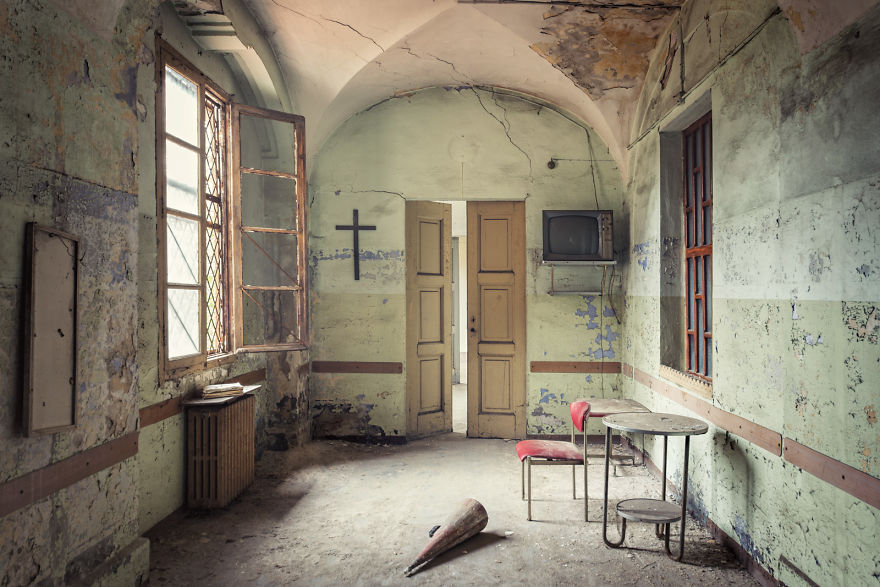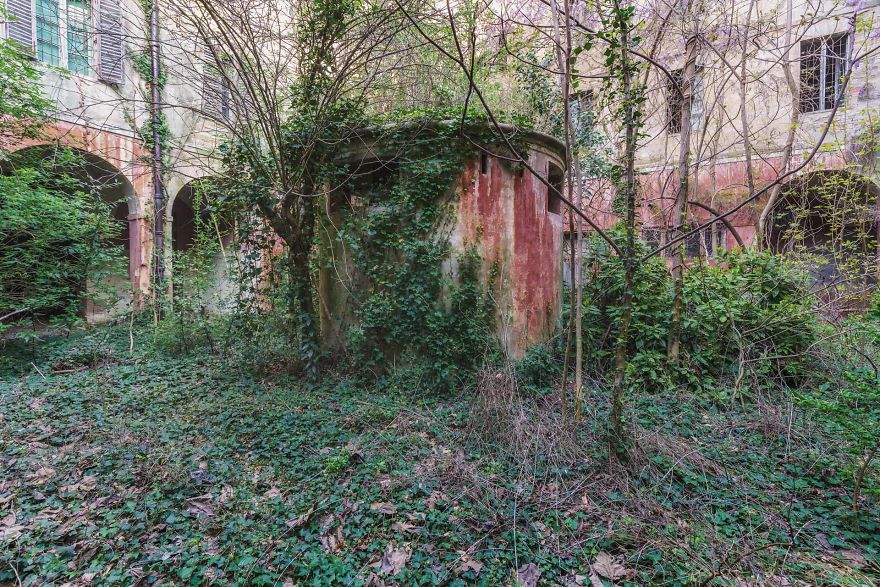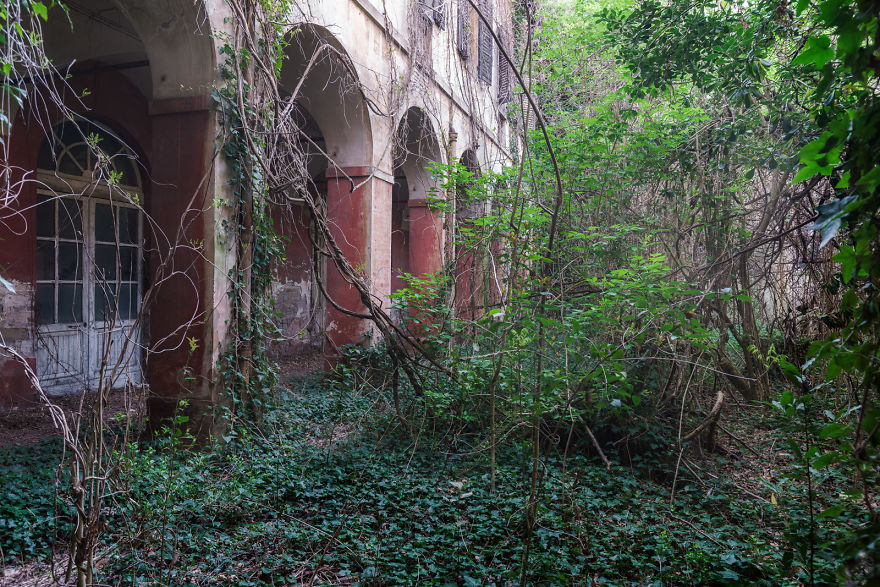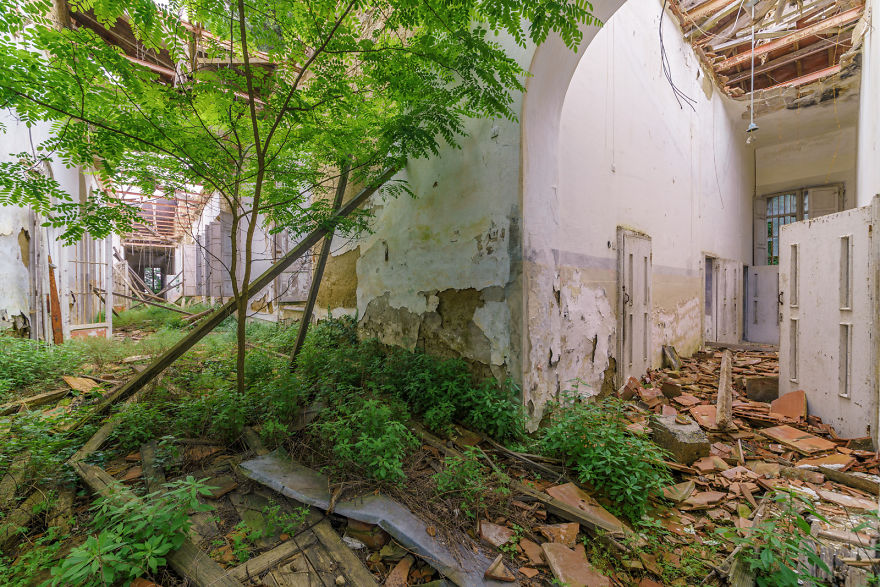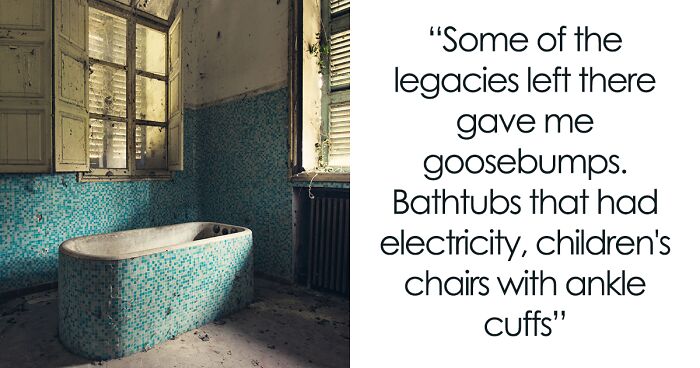
I’ve Captured The Dark And Mysterious History Of Madhouses In Italy (30 Photos)
"As soon as the patient passes the internment wall, he enters a new dimension of emotional emptiness ([...])" — Franco Basaglia (Italian psychiatrist, 1924-1980).
It seems strange to me to write that, but mental illness has been with me all my life. I grew up in Haar, a Munich suburb. A tranquil and beautiful place yet one that accommodates one of the largest psychiatric institutions in Germany. A beautiful area with old Art Nouveau buildings but also with a cruel dark past, because in World War II euthanasia was practiced here.
Having this in mind, my curiosity for the background of psychiatric institutions was awakened. When I visited one of these former institutions in Italy for the first time in 2013 and learned more about the sometimes cruel conditions, I realized that I wanted to photograph these places.
More info: andyschwetz.de | flickr.com | Instagram
This post may include affiliate links.
Dr. Rosetti
This is the former psychiatric Hospital in Racconigi, Piedmont. It was a very advanced hospital for its times, with lot of efforts to keep the scientific and operational aspect up to date and cutting edge. The building itself is much older -it has been an hospital since the late 1700s, and later a military boarding school- but the mental health insitution that was run inside its walls was everything but "old-style". Since the 1870s new therapies were tested and tried all the times, including some of the very first electrical treatments, and modern techniques such as radiology, neurosurgery and ergotherapy (helping the inmates to heal through work, a method that is still considered very effective) Of course the place was not dilapidated as in those photos. It has been abandoned since the early 1980s, without any upkeep and at the mercy of squatters and thieves. In my opinion it would be awesome to have it renovated and used as a museum for history of psychiatric care.
Hells Eden
Mother Nature has a way of hiding sins from the past. Careful if the serenity you see
There are many stains on the white straitjacket in the history of psychiatry. Italy and its Manicomio was, unfortunately, a prime example here in the last century.
The law of 1904 allowed the police forces to obtain an urgent request for a briefing. So there were not only the mentally ill but also "unwanted" people such as the homeless, petty criminals, etc. who were instructed and denounced without a diagnosis. The church also had the power to determine who was mentally ill. The physicians and the respective other parties were in this under the same blanket, so the doctors often confirmed a disease even though there was no illness.
One More Light
Oversized
Later, at a time when fascism prevailed in Italy, political opponents, disabled persons, and other groups of people who did not fit into the regime's model of society were barred to prison on the pretext of "social danger." So it went from 1926 to 1941, and the number grew from 62,000 to almost 100,000 inmates. Often, people were incapacitated and simply locked up until their death.
The living conditions in the asylums were mostly unworthy of human beings and the treatment methods were questionable and cruel: insulin treatments, restraint systems, and especially the later introduced electroshock therapy had devastating effects. The worst-off inmates experienced nothing but the lack of care and the robbery of human identity.
A New Dawn
Thoughts Prison
Here is an excerpt from the medical file of Vicenzo M. who was admitted at the age of 17 and who was "held" for the following 27 years in the same ward:
"10.5.47: Electric shock
10.7.47: Feverishly occupied tongue
10.11.47: Nothing new
12.4.48: Always apathetic, stupid, deprived of all initiative. He expresses no wishes; smiles blandly, eats voluntarily, does not seem to hallucinate.
10.11.61: (After 13 years) severe mental confusion, apathetic, inactive, indifferent.
Quiet in 1964, not aggressive, idle
Unchanged in 1967
1970: Unresponsive, dirty, apathetic indifferent. " [Source]
The boy was only in the asylum for being a case of a "madman". Previously, he was a normal schoolboy.
The Last Walk
Like Kings (...)
The end of this dark period came only 74 years later. when Legge 180, or otherwise known as the Basaglia Law, was issued on May 13, 1978. The Manicomi in their old form were closed. Franco Basaglia took over the management of the Psychiatric Clinic of Gorizia in 1961, having resigned as a psychiatry professor at the University of Padua since the theories taught there were wrong and had nothing to do with the condition of the persons in psychiatric hospitals. He was the first in the world to claim that one had to close and regulate psychiatric institutions because captivity, fixation, electroshock, and psychotropic drugs had no therapeutic value.
Deceptive
Bad Treatment
I. Can’t help but wonder what photos will be shown of the year 2020 as images or examples of how bad things were ‘then’. Makes one think in broader terms.
Today, many of these old, partly architecturally exciting buildings have been empty for many decades. They are memorials of ignorance and intolerance and they are monuments to thousands of terrible fates of innocent, sick and simply unfortunate people. Accordingly, I also felt an intense melancholy and oppressive mood when I visited these places. High, monastery-like corridors, high-security tracts, and dormitories that were often designed for 100 people or more.
Also, some of the legacies left there gave me goosebumps. Bathtubs that had electricity, old surgical chairs, children's chairs with ankle cuffs, straitjackets and old morgue tables.
Next To You
Today, the old Manicomios disappear increasingly. Some were partially renovated or demolished because of the extreme danger of collapse. The vandalism has also increased in many of these places, helping it to become history.
Although our society has still not quite accepted that mental illness is a normal disease, it is shocking to see the dominant preconceptions until the mid-1970s. In any case, in comparison with conventional medicine, it was a scientific and moral Stone Age.
Silent Screams
The Holes
it makes you think doesn't it how far we've come and yet All we hear is how terrible we all are and her in less than 100 years we've come so extremely particularly in psychology mental health was seen to be insanity but we still have very far to go.weve come so far a species so far we realising that we did wrong so we're trying to fix our mistake everybody keeps going in about how bad we are all yes we are but please do not forget that human beings are a amazing generous intelligent species . sorry about this being so long. and for any inconvenience caused thank you
Over the years, many photographs have been accumulated and I possibly have the opportunity to publish a book about it because the topic offers interesting content and so many facets. But for now, you can visit my website where I published also the first report about one of the asylums.
Straitjacket
Vulnerable
Over the years, many photographs have been accumulated and I possibly have the opportunity to publish a book about it because the topic offers interesting content and so many facets.
But for now, you can visit my website where I published also the first report about one of the asylums.
Final Destination
The Way Into The Uncertain
Help Less
The green is such a contrast to the rest of the scenery, in a good way. It's nice to see that at some point, in the far future, nature will reclaim this sad place and turn it into a garden.
Solitude
Clockwork Orange
It was an auditorium. The hospital had a large medical community, some of whom working on research. These kind of rooms still exist in most hospitals, where there is the need to share the findings of studies or to provide training to other people. Often these rooms double as spaces for cultural events or for staff meetings.
Idyll....maybe
Fixation (Kids Edition)
Invastigation
If it's a long term facility, gynecological exams would still be a necessity for some. For some, leaving to go to a dr.s office might be unnecessarily traumatic, if it could be taken care of on premises, better for the patient
Silence Is Golden
Claustrophobia
The End Of The End
One Way
Nof4
Lonely End
The history of psychiatry is steeped in both fascination and darkness. This intriguing dichotomy, much like the provocative humor in children's literature for adults, can challenge societal norms and provoke a wide range of emotions.
For those interested in exploring the interplay between controversial content and human reactions, you might find the exploration of dark humor in unconventional storytelling especially intriguing.
Ad Infinitum
As a 73 year old white American male, and having lived through the end of one World War and several intermediate military events, one during which I served with initial pride and ultimate embarrassment, and watching the charade in which we now reside, I can only say that these photographs and the accompanying comments leave me approaching insanity just at the thought of how we have adversely evolved in the past single generation. Sure, we reached the end of not knowing how to treat the less fortunate and less educated, but now we subject them to ideology that is ultimately more profound than the forces that led those before us into these walls of horror. Much the same as trying to raise our children by reading a brilliant author publication from the last generation is ludicrous, I would submit that, like much of our history that repeats itself, the halls of the perceived insane will again be full at some point. S**t. One Flew Over the Cuckoos Nest. The answer, my friend, ........
The Takeover
Full Service
Looks too big to be a dunce's cap. To me it looks more like the old style of fire extinguisher which were cone-shaped. You can just see the handle on the other side of it.
Bloody Walls , Dark Hearts
Creepers
Junglecamp
What, exactly, is this area? Is it indoors or outside? Can't tell a think from this. Except derelict. This is creepy and fascinating all at the same time, this series of photos.
The madhouse is a giant Soundbox,
and the delirium: echo,
the namelessness: measure
The madhouse is the enchanted one
Mount Zion on which you
the tablets of a law receive
that people do not know.
(Alda Merini, poet, over 20 years inmate at the Manicomio)
I really think that these kind of buildings could have been very beautiful in their time. It is just very sad to think about how bad they treated the patients in those times. How many of them died there and how many of them had a declining mental health after they went to a place like that is just horrible to think about.
This would never exist in the USA. First the antique dealers large and small would have stripped it down to the walls then scrappers would tear out any bit of metal leaving a rotting bare ruin. I am looking at thousands of dollars worth of things there.
Despicable and tragic. To make it worse, "The church also had the power to determine who was mentally ill."
Where I used to live, in a city of more than a million people, there was a homeless population that mostly wandered around aimlessly downtown. I'm not sure that turning people with severe mental illness loose to fend for themselves is kinder than putting them in a hospital. At least they'd be fed, clothed, and sleeping in a bed instead of under a stairwell in a parking garage. I'm not sure what the answer is, but there must be something between the two extremes that would be better for them.
In many places in Italy, like Trieste, the transition between closed wards and community care was carefully managed. In many places it was not. People who like my uncle had been in a locked ward all their life were simply turned out on the streets. That was its own tragedy although it makes for less striking photography. The saddest part for me was to reflect on how a progressive law like Basaglia’s would never be passed today in Italy.
One of my uncles was In an insane asylum from when he was 18 to his death. First in Udine, then during the war he was moved to Volterra, then back in Udine. After Basaglia not all hospitals were closed, because there were people like my uncle who could not (and would not) live outside after a lifetime of institutionalisation. The old manicomio was turned into a therapeutic community and he lived there, happily working as a gardener, until his death. To be fair these don’t look like prisons, they look like Italian hospitals which have become derelict. I have been inside modern, functioning hospitals that looked a lot more depressing. I have also been in a psychiatric ward, post-Basaglia, and it was a far more positive experience than the time I spent in a private luxury clinic. Mental illness is not pleasant but the psychiatric ward felt safe and restful. This was in Padua, Basaglia’s own old ward.
This is so sad. I have spent my share of time in psych wards and it is so traumatic I can't imagine spending years and years in one. I can now be trusted with sharp objects as of yesterday though.
It is so sad that people thought that if someone was mentally unstable, they deserved to die since they weren't "perfect". People still think that way...
The description between pictures 6 and 7 made me sick to my stomach. Some others did too. Sometimes you didn't have to have an issue to get put there. Maybe family just wanted their "difficult" family member out of the way. Or husband wanted wife out of the way. And then the decent into madness.
I really think that these kind of buildings could have been very beautiful in their time. It is just very sad to think about how bad they treated the patients in those times. How many of them died there and how many of them had a declining mental health after they went to a place like that is just horrible to think about.
This would never exist in the USA. First the antique dealers large and small would have stripped it down to the walls then scrappers would tear out any bit of metal leaving a rotting bare ruin. I am looking at thousands of dollars worth of things there.
Despicable and tragic. To make it worse, "The church also had the power to determine who was mentally ill."
Where I used to live, in a city of more than a million people, there was a homeless population that mostly wandered around aimlessly downtown. I'm not sure that turning people with severe mental illness loose to fend for themselves is kinder than putting them in a hospital. At least they'd be fed, clothed, and sleeping in a bed instead of under a stairwell in a parking garage. I'm not sure what the answer is, but there must be something between the two extremes that would be better for them.
In many places in Italy, like Trieste, the transition between closed wards and community care was carefully managed. In many places it was not. People who like my uncle had been in a locked ward all their life were simply turned out on the streets. That was its own tragedy although it makes for less striking photography. The saddest part for me was to reflect on how a progressive law like Basaglia’s would never be passed today in Italy.
One of my uncles was In an insane asylum from when he was 18 to his death. First in Udine, then during the war he was moved to Volterra, then back in Udine. After Basaglia not all hospitals were closed, because there were people like my uncle who could not (and would not) live outside after a lifetime of institutionalisation. The old manicomio was turned into a therapeutic community and he lived there, happily working as a gardener, until his death. To be fair these don’t look like prisons, they look like Italian hospitals which have become derelict. I have been inside modern, functioning hospitals that looked a lot more depressing. I have also been in a psychiatric ward, post-Basaglia, and it was a far more positive experience than the time I spent in a private luxury clinic. Mental illness is not pleasant but the psychiatric ward felt safe and restful. This was in Padua, Basaglia’s own old ward.
This is so sad. I have spent my share of time in psych wards and it is so traumatic I can't imagine spending years and years in one. I can now be trusted with sharp objects as of yesterday though.
It is so sad that people thought that if someone was mentally unstable, they deserved to die since they weren't "perfect". People still think that way...
The description between pictures 6 and 7 made me sick to my stomach. Some others did too. Sometimes you didn't have to have an issue to get put there. Maybe family just wanted their "difficult" family member out of the way. Or husband wanted wife out of the way. And then the decent into madness.

 Dark Mode
Dark Mode 

 No fees, cancel anytime
No fees, cancel anytime 






